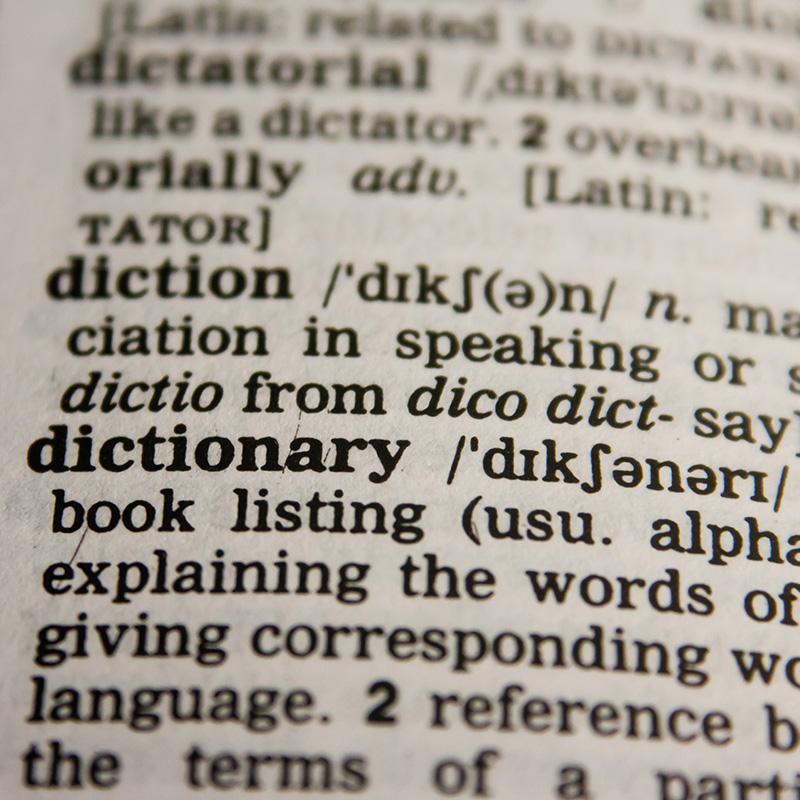The lexicon of any language can be divided into words, which are perfect small items or, in other words, chunks of knowledge that our SuperMemo method of spaced repetition works best with. This is why we enjoy designing vocabulary courses so much; we know that SuperMemo provides its users with an ideal environment to develop their lexical competence. The SuperMemo.com system has long been equipped with the “Extreme” series that includes learner’s dictionaries for 4 major languages: English, German, Spanish and French.
Each language in the “Extreme” series contains 25,000 meanings, or senses, divided into 4 parts and 6 levels according to the Common European Framework of Reference. The vocabulary ranges from the simplest, most frequently used words to very rare ones that even native speakers may find demanding or interesting to acquire. Each entry includes:
- the keyword and its definition in the target language recorded by native speakers,
- one or two examples of use,
- part of speech,
- collocations or synonyms when applicable.
All these elements are needed for the dictionary to be complete for learning purposes. Depending on the language and level, the “Extreme” courses are equipped with:
- photographs,
- additional recordings and translations to English, Polish, Chinese Mandarin (simplified), German, Spanish, Italian, Russian and French. We have been adding new elements, features and updates ever since the series was first launched in 2010.
We are often asked by SuperMemo users about vocabulary courses for other languages. For a long time now, we have been thinking not only about how to optimally add new languages to the series, but also how to best equip them with multiple translations to make them useful for more and more learners. Obviously, creating dictionaries for learning with such requirements in mind is a project that takes a team of lexicographers for multiple languages and many months of focused work. With our own “extreme” experience so far, we started to realise that we would achieve the most effective result by cooperating with specialists in the field of lexicography who would already have the core of the material prepared. As it happens, SuperMemo is an associated company of the PWN Group, a leading publisher of dictionaries and automatic translation services, and active member of the international publishing community with licensing agreements linking us to some major world brands. We therefore had a chance to look far and wide for inspiration. We did thorough research and devoted countless hours to discuss our needs with top dictionary makers; we experimented with automatic translation and tried merging lexical information from different sources. And still, we were not satisfied with the outcome.
As you can imagine, it is not a big problem to find a particular bilingual dictionary, e.g. from language X to Y. It is more complicated to find a reliable dictionary which contains translations to multiple languages. It is even harder to find a good dictionary provider with a homogenous set of source and target languages. What we mean by “homogeneous” is that you can pick any 2 languages, say X and Y, from a larger database, and build a dictionary of Y equipped with translations for X speakers that will have a similar look and feel to a dictionary of, say, Z for X speakers, or X for Z speakers. It verges on the impossible to have such dictionaries equipped with all the lexical information necessary for effective memorization and at the same time make them useful in various language combinations.
Well… If you know the history of the SuperMemo algorithm or Olive Green English, you may know we have experience in doing things nobody ever tried before. We kept digging.
In January 2020, we met Ilan Kernerman, the founder and owner of K Dictionaries (or KD for short), global leader in creating and providing cross-lingual lexical data. Ilan got intrigued and inspired by our requirements but was sceptical at first. We did not give up though. Putting KD’s cooperativeness and rich resources to the test, we worked together for weeks pinpointing what we needed to provide you with a huge set of completely new learner’s dictionaries. In April, we signed a licensing agreement setting out a long-term plan of cooperation. By merging 2 different lexicographic sets – one perfectly handcrafted and one semi-automatically produced – as well as KD’s expertise and technical experience, we are on the way to 19 new vocabulary courses, all equipped with useful lexical data and basic translations to 15 languages. With this endeavour, we will add 6 new languages to our current list, and supply brand new content for learning 13 languages that are already available in our offer. Altogether, this means 276 possible language-to-language combinations!
We estimate that the number of headwords will range between 10,000 and 15,000, and the number of senses will reach 15,000-25,000 depending on the language. This is more than enough to pass an advanced-level exam with flying colours!
Entries will include information galore:
- the headword,
- phonetic transcription,
- irregular forms,
- part of speech,
- grammatical gender and number,
- division into senses,
- order by frequency and importance,
- definition,
- sense attributes such as synonyms, antonyms, register and subject domain,
- examples of usage
- phrases.
The exact scope of these elements may differ from entry to entry and from language to language, depending on the data applicable. It does sound like a gold mine of knowledge!
The project will be premièred with a course of Italian vocabulary including translations to 14 languages. We are warming up the engines and estimate it should be ready for you to enjoy in autumn 2020. If we manage earlier, you will be the first to know. Next languages will be published gradually over the course of one year. We are excited about this and sincerely hope you are, too!



